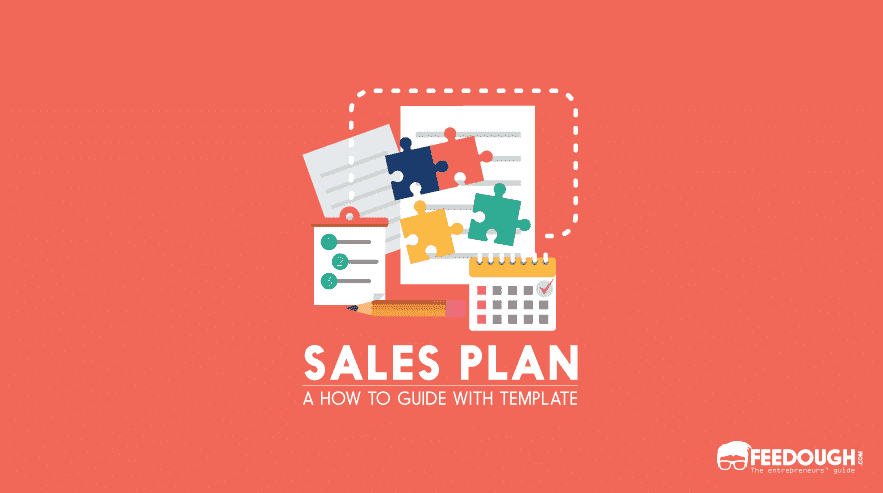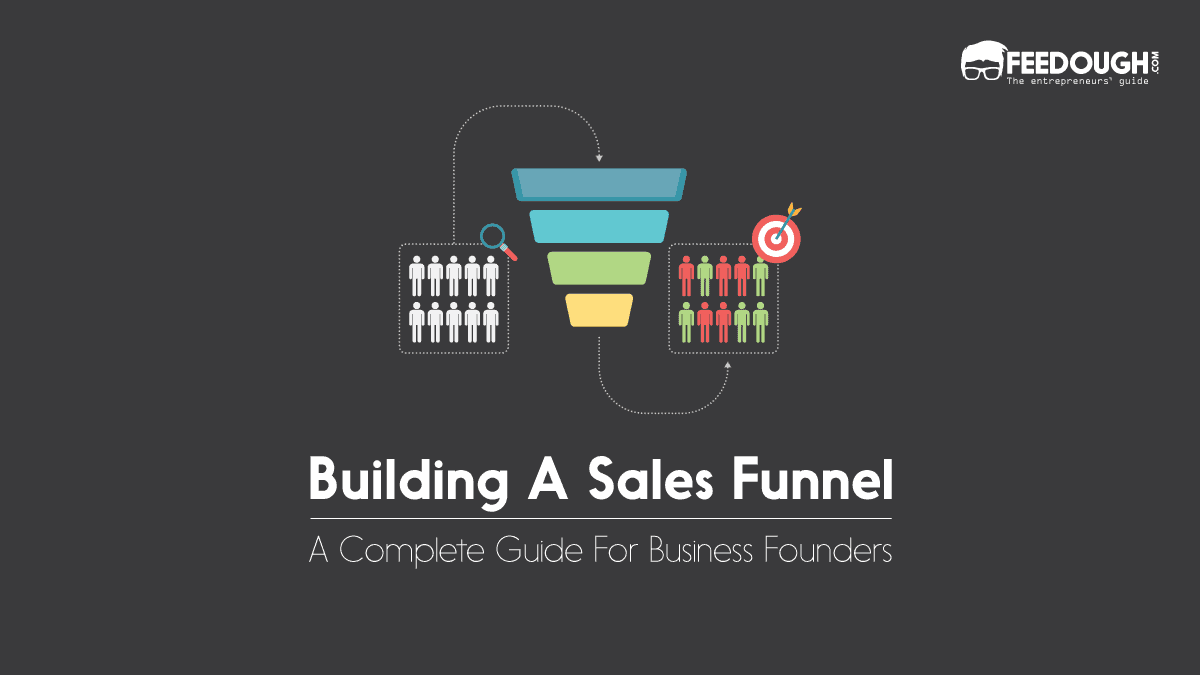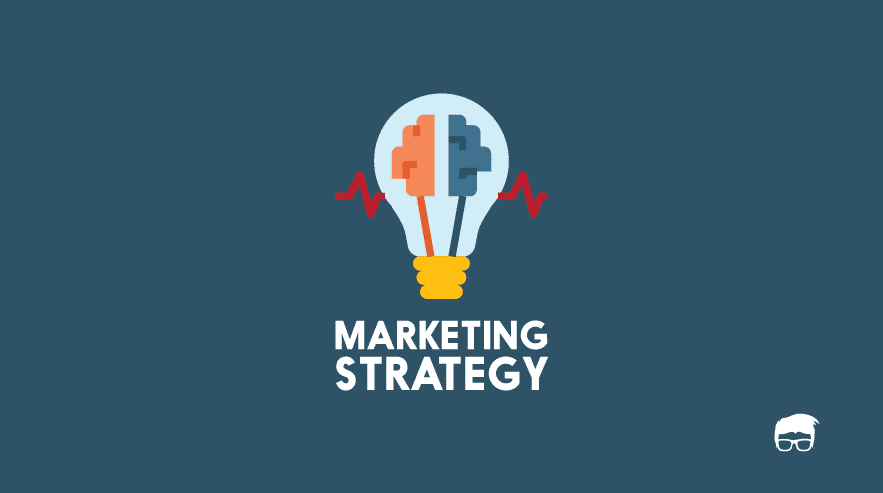No matter how hard you think sales is, it’s the backbone which keeps your business alive. It’s something you can’t run away from. The only choice you have is to embrace it and form strategies to execute it in a smoother way. A sales plan helps you to do just that.
It is a document which describes your objectives and processes of converting the sales lead into a paying customer. It establishes the revenue growth plan and other measurements for success.
What Is A Sales Plan?
A sales plan is a document outlining the periodic sales objectives, target customer persona, sales strategies, tactics and tools, and key metrics to measure sales success after a certain period of time.
In simple terms, a sales plan is a document which specifies the sales objectives and also lays down the strategies to achieve them.
Importance Of Sales Planning
Sales planning is an important aspect of the sales management process which involves sales forecasting, demand management, setting sales and profit targets, and listing action plans and execution steps to conduct categorised sales.
- Sales Forecasting: Accurate sales forecasting is important to make informed business decisions and predict short term and long term performance.
- Demand management: Preparing a sales plan with set sales goals help the organisation to effectively and efficiently balance the customer requirements with the capabilities of the supply chain.
- Setting Sales and Profit Targets: Setting sales and profit targets boosts performance by motivating the employees to prioritise, increase their effort and induce focus in their daily tasks.
- Standardisation of Sales Process: Many industries deal with a similar types of clients. Having a sales plan with execution steps and standardised processes works best for them.
Sales Plan Template
Before we move on to explaining how to create a sales plan, download the sales plan template from here and keep it open while reading the next sections.
How To Create A Sales Plan?
While having a sales plan template always works, you also should know what exactly you need to write in the fields of sales plan templates.
A comprehensive sales plan has six sections
- Mission and Objectives: Company’s mission, sales goals, and periodic sales objectives.
- Customer Focus: Customer profiles and customer persona.
- Strategies & Tactics: The short term and long term strategies and tactics to be used by the sales employees to acquire new business opportunities as well as grow business with existing customers.
- Tools, Software, and Resources: The approved tools that are used to manage, execute and record sales activities.
- Key Metrics: Metrics that are to be used to track the progress or success rate.
- Sales Budget: Itemising expected costs and the expected ROI.
Step 1: State Your Mission And Objectives
Begin your sales plan by stating your company’s big vision and other long term objectives. These help you to make sure your sales objectives are aligned to the big vision of the company.
Outline Your Company’s Mission Statement
Your mission or vision statement is the summary of the aims and values of the company. It is what your company stands for and what it aims to become.
A good sales plan always starts with the company’s mission statement. Here’s an example of a mission statement –
Our mission at xyz digital is to provide cutting edge digital marketing solutions to startups operating in the healthcare niche.
State Your Sales Objective
Sales objectives are periodic goals supporting the company’s growth in the present and future. These goals are set after conducting in-depth research on the present and future performance related factors and become the targets for the team to achieve in the coming future.
Make sure you use the SMART approach to set your sales objectives. A SMART goal is a well-formulated goal which is specific (S), measurable (M), achievable (A), relevant (R), and time-bound (T). The SMART approach helps you define a crystal clear goal which is specific, measurable, and more attainable.
Categorise your goals into short term and long term goals. Define goals for 1 year, 3 years, and 5 years in advance.
Step 2: Define Your Target Market
Once the sales goals are set, you need to specify who’ll be your target audience. Define your sales model; is it B2B, B2C or any other? Once the model is defined, dive deep into defining the customer profiles and buyer persona.
A buyer persona is a fictionalised character representing your ideal customer created based on market research of prospective customers and existing customers and real data on the existing customers. We’ve written an in-depth guide on buyer persona (with template) to help you create one for your business.
- Provide special attributes of your customer in the B2C model — what he likes, what brands he follows, who influences his purchase decisions, how much he earns, what are his educational qualifications, etc.
- Similarly, provide special attributes of your business (B2B) client — what’s its positioning, who are its customers, what’s the pricing model, company size by annual revenue, company size by employees, etc.
Step 3: List Your Strategies And Tactics
The next step of filling up a sales plan template is to list your long term and short term strategies that you’ll use to acquire new business and grow the existing ones. These strategies are designed to align profit objectives with the long term sales objectives and the company’s vision.
These include –
- Positioning: Almost all your sales strategies complement your positioning. It’s important to state your current and future positioning strategies, how you’re different from your competitors, and what’s the difference in pricing and products offered. Also, discuss the market trends related to your niche. Also state the positioning strategies of your competitors.
- Marketing Strategy: Use this section to explain your pricing and promotional strategy which you’re planning on running for the specified time period. Make sure you’ve run that on a test audience before and have stats to support their impact on sales. An example version could be — Product X – Decreasing price from $300 to $275 on Mar. 3 (13% increase in monthly sales), Upselling product Z -Product Z & Product X package increased sales by 5%.
- Prospecting Strategy: This section outlines the criteria a prospect has to fulfil before being reached out by the sales team. It also includes strategies and methods to be used by the sales team to convert these prospects into qualified leads.
- Existing Business Growth Strategies: This section of the sales plan is something that should never be skipped as existing businesses can not only give you more business if proper upselling strategies are used, but they can also bring more customers if you give them good referral benefits. Include the strategies that you’ll use on getting the most from existing customers.
- Action Plan: The above sections talk about where you want to go but this section is all about how you’re going to reach there, who are going to be riding for you, and when is the deadline. Use this section to divide the work among the teams and set milestones, control metrics, and appropriate rewards for the teams and individuals who perform well.
Step 4: State Your Tools, Software, And Resources
This space summarises the software, tools, and other resources that the sales team will be using to support the successful implementation of your sales plan.
The tools and software include CRM and SEM SAAS along with other industry-specific tools.
Step 5: Assign Metrics For Better Control
Once every strategy is formed, every task is assigned, and every milestone is set, it becomes important to set key metrics that are to be used to measure the progress and the success rate from time to time. Here’s how you can do it –
Give a name to each step in your sales process
It’s always preferred to break your sales process into different steps and assigning a name to each step. It gives a common language which helps you to communicate the progress the difficulties related to every step.
Specify success tollgates and potential threats for each stage
Besides giving a name to each step, we also suggest you give a name to every event or trigger that must occur in order to qualify the lead to move from one state to another. An example of such a trigger could be a reply to the cold email.
Also mention the reasons which can lead to losing the opportunity at each step. Prospect refusing additional information could be one such lost opportunity trigger.
Establish metrics for success at every stage
The next step will include specifying a success metric that would measure the progress of every stage. It could be anything depending upon your niche of operation.
Set expectations for the process flow
You also have to establish the time period for which the lead stays in each stage of your sales process. It is important to measure ROI in terms of time spent on every lead and also prevent the sales team to not to continue the process if a certain lead has crossed the limit.
Step 6: Setting A Sales Budget
A sales plan revolves around what you have and what you need to achieve in the near future. It really will not make any sense if the costs exceed the benefit you’re aiming for.
A sales budget helps you measure the anticipated return on your investment. Including it in your sales plan will let you assign cost caps and predict the returns.
It is advisable to break your budget into fixed and variable costs and revisiting it from time to time for more accuracy.
Types Of Sales Plan
While the rule of thumb is to create a strategic sales plan for the whole organisation with everything we’ve mentioned above. Companies, however, use many different types of sales plans to make their operations easier. These are-
Strategic Sales Plan
It’s a strategic periodic sales plan which consists of the company’s sales objectives, target market, sales strategies, sales tools, and sales budget. It strategically outlines what needs to be done to increase the sales, when it needs to be done, who needs to do it, and what to do to measure it.
Territory Sales Plan
A territory sales plan is a variation-cum-subset of a strategic sales plan which is created to be used within a specific territory or market segment.
Tactical Sales Plan
A tactical sales plan is a subset of the strategic sales plan developed by the teams within the organisation to smoothen their operations. It includes more detailed team-specific strategies and tactics which align with the overall corporate sales strategies and objectives.
Contingency Sales Plan
A contingency sales plan states how the organisation will perform sales-related activities at times of unforeseen events like a sudden loss of key personnel, change in governmental policies, game-changing offers by the new competitor(s), etc.
Go On, Tell Us What You Think!
Did we miss something? Come on! Tell us what you think about our article in the comments section.
A startup consultant, digital marketer, traveller, and philomath. Aashish has worked with over 20 startups and successfully helped them ideate, raise money, and succeed. When not working, he can be found hiking, camping, and stargazing.









